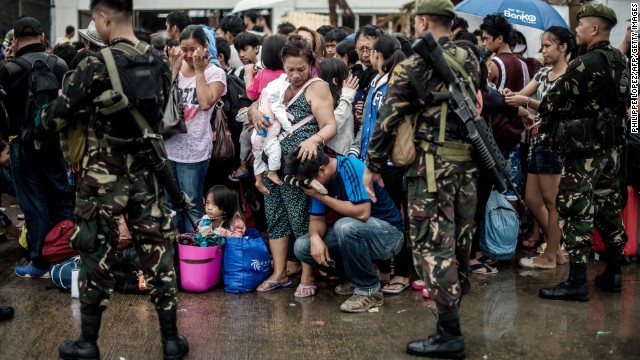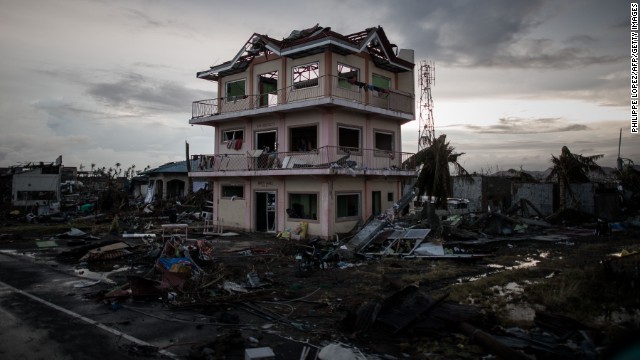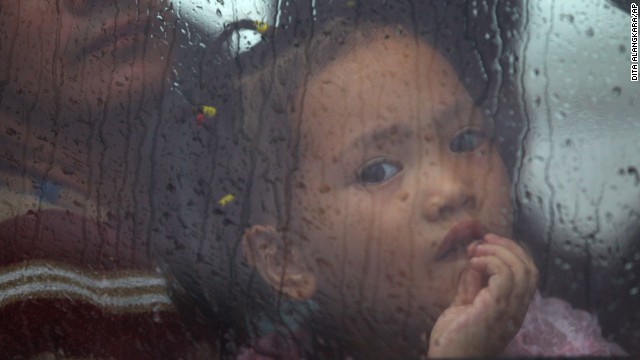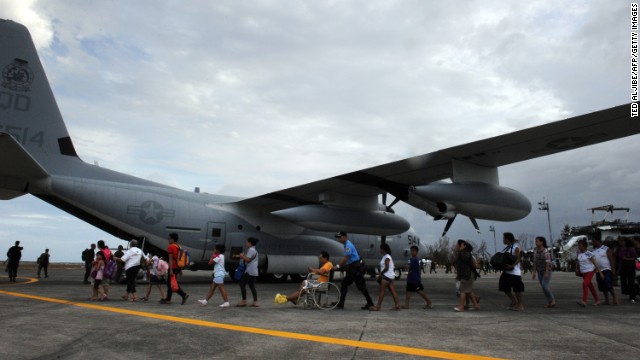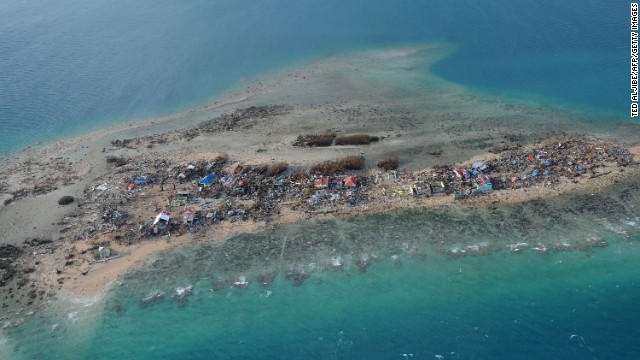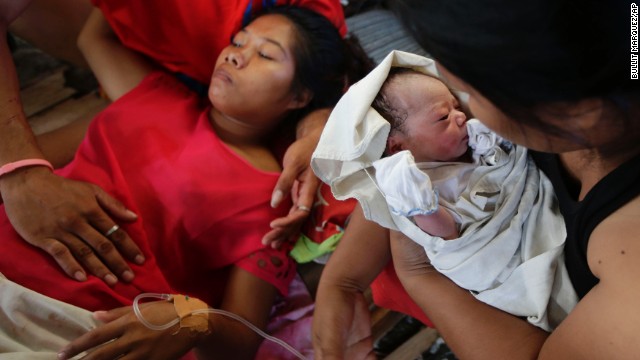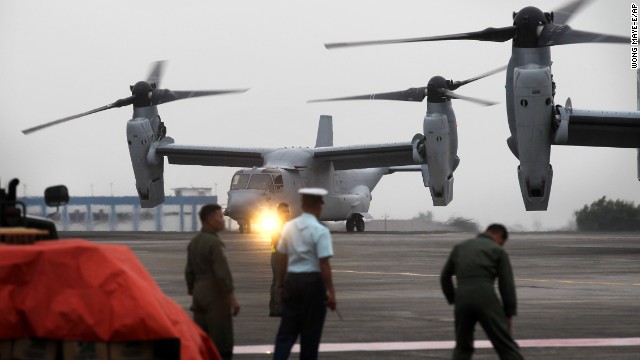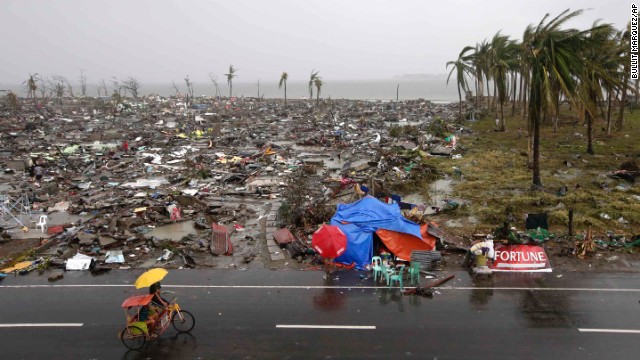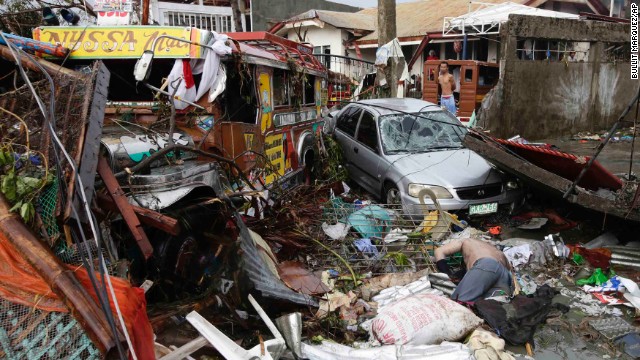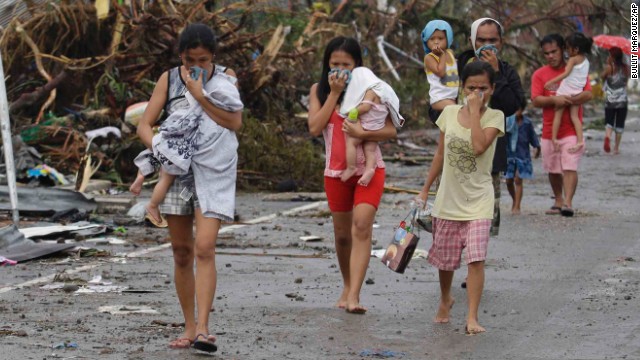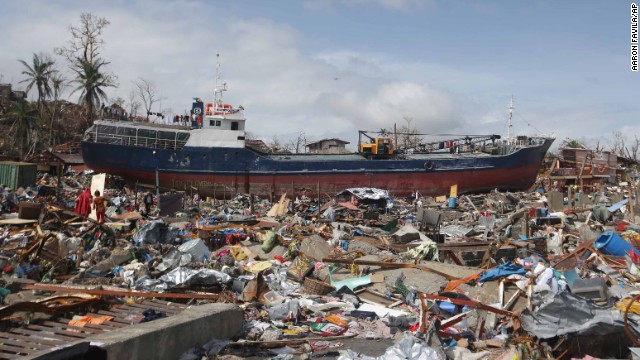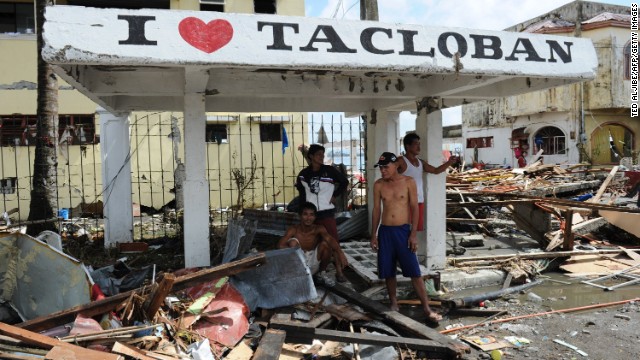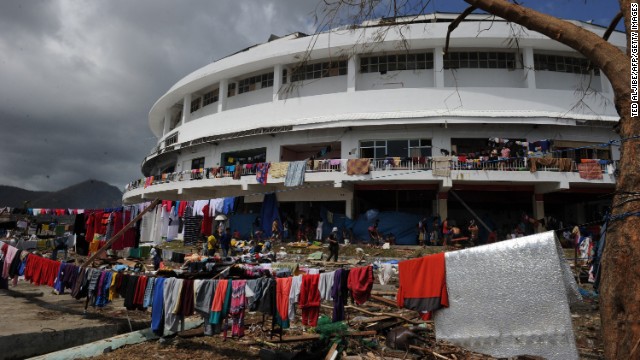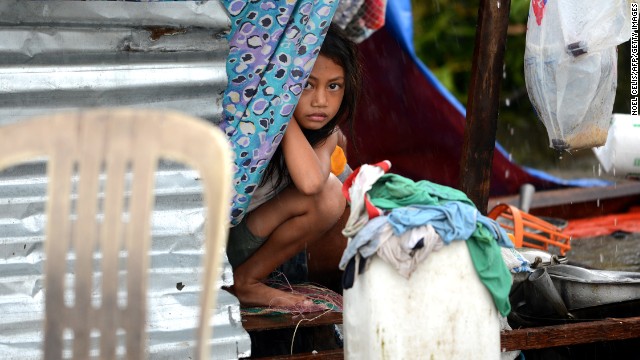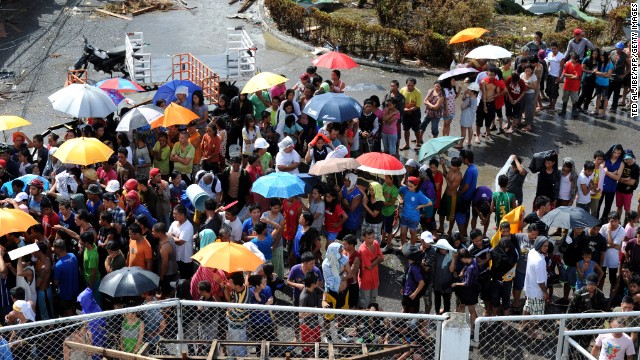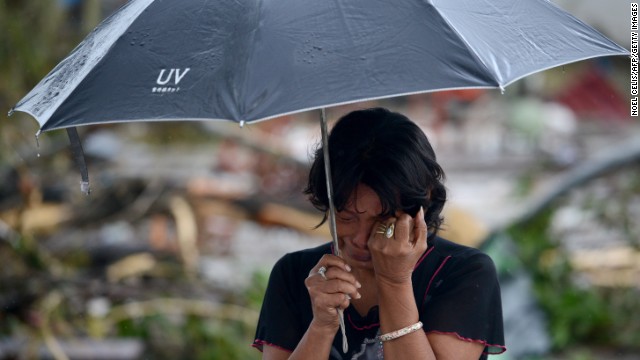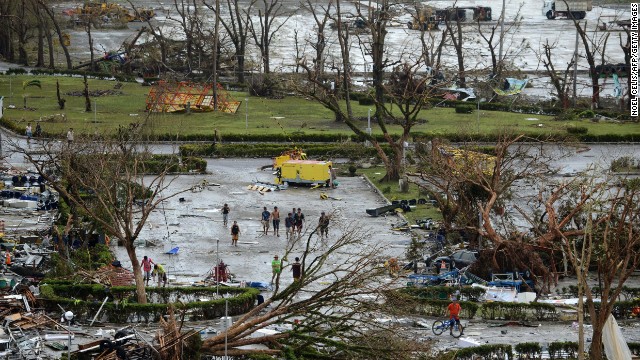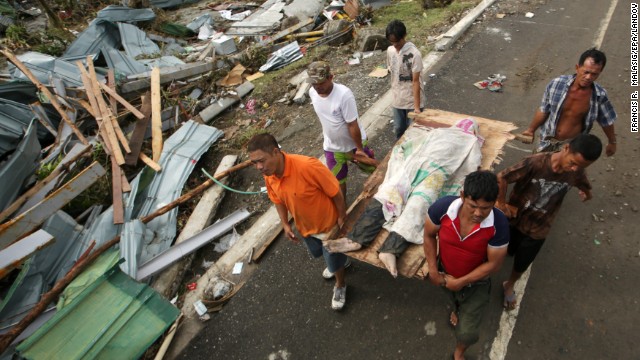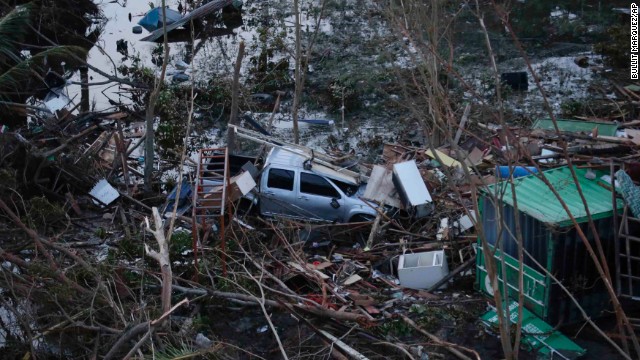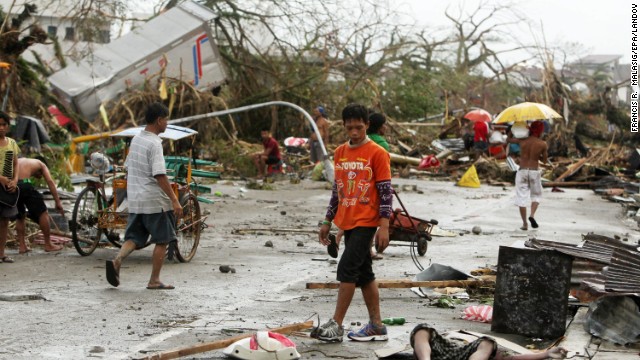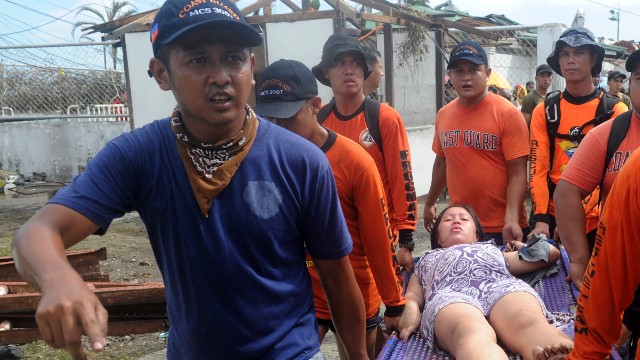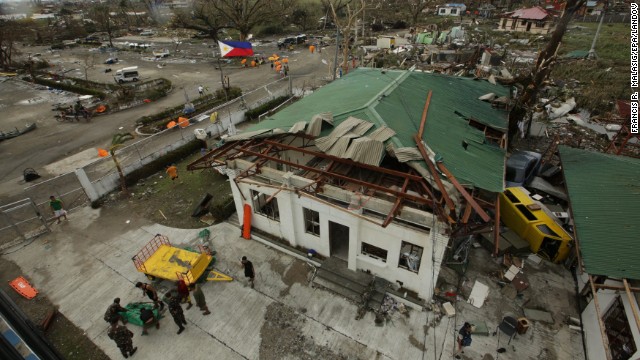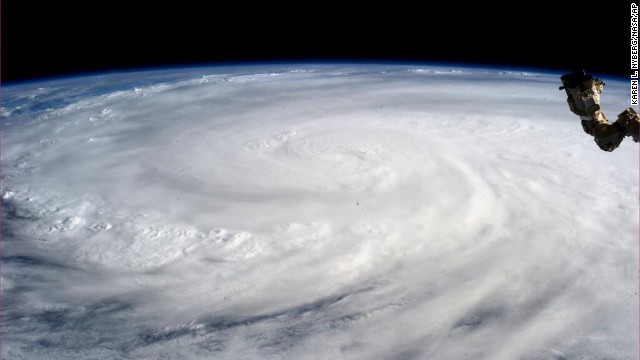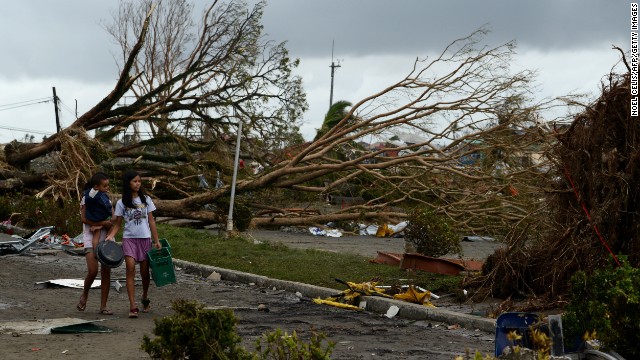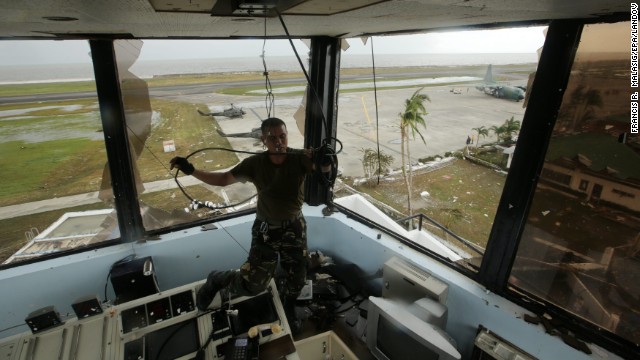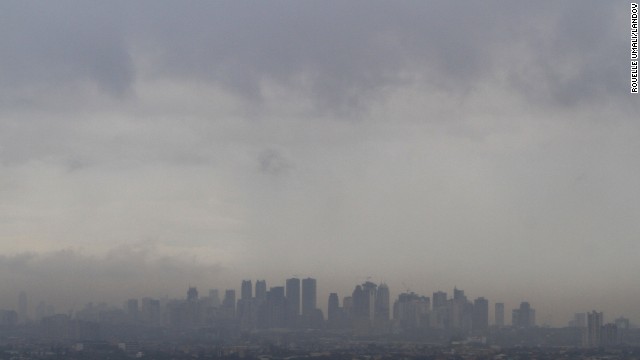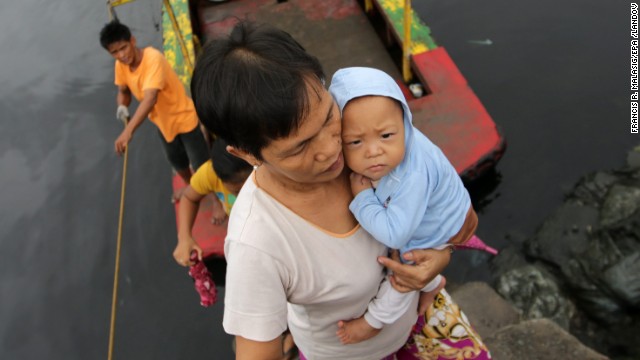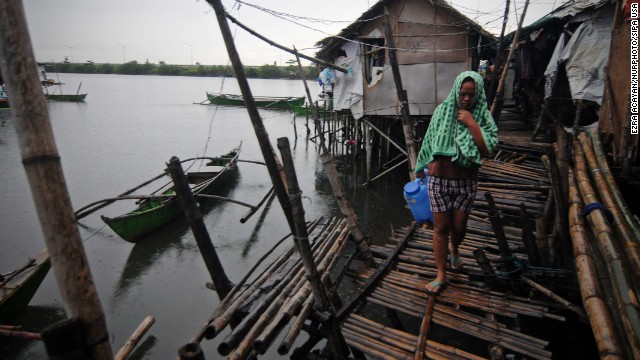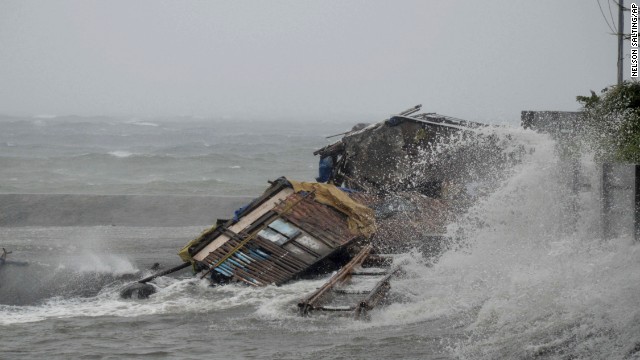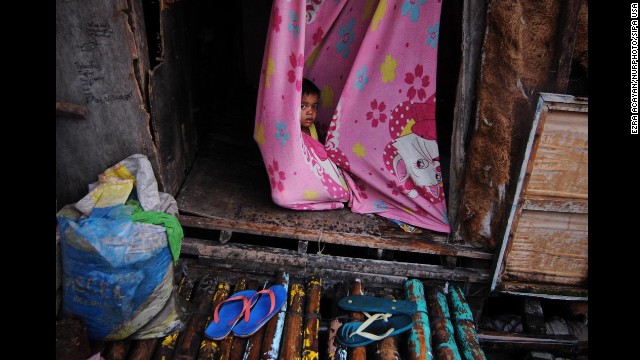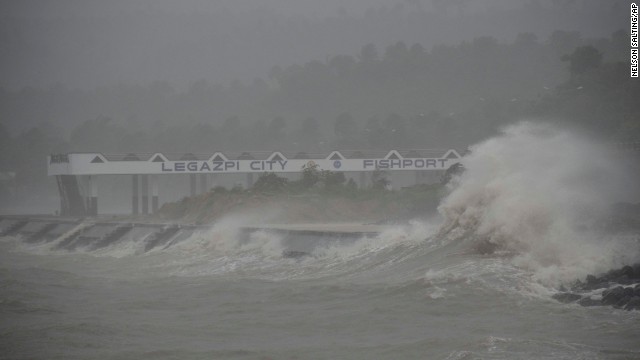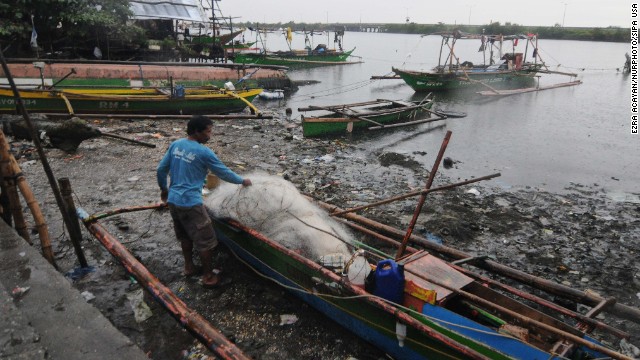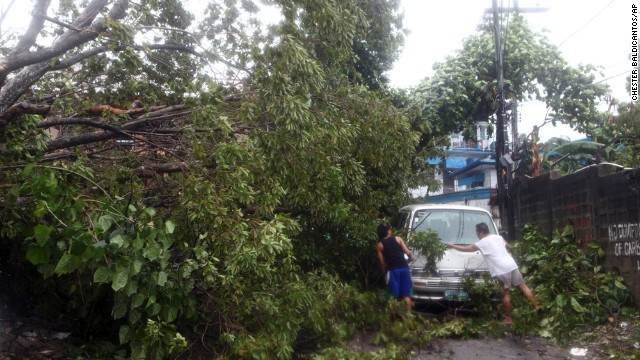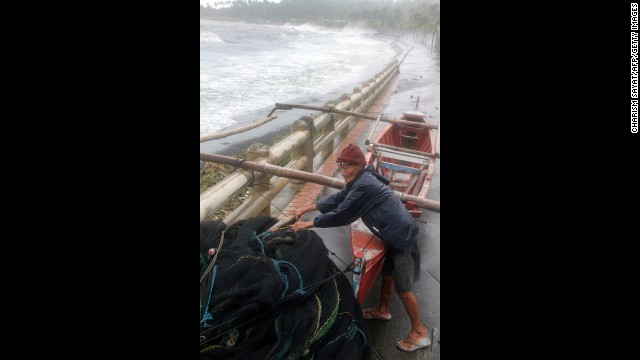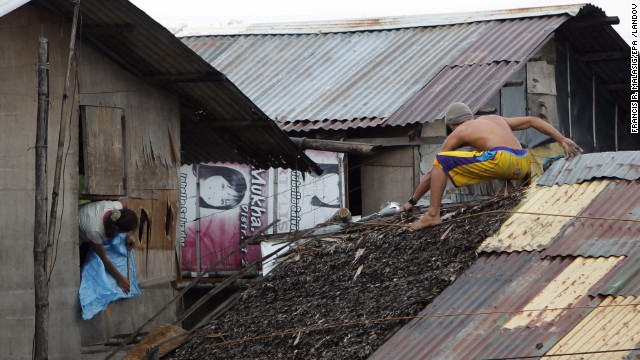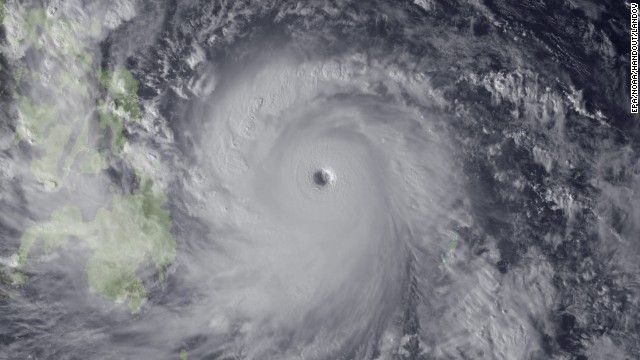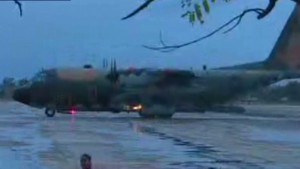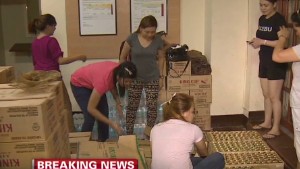A woman comforts a crying relative as a plane leaves the airport during evacuation operations in Tacloban, Philippines, on Tuesday, November 12. Typhoon Haiyan, one of the strongest storms in recorded history, laid waste to the Philippines. Officials say as many as 10,000 people may have died in the storm.
Debris lays scattered around a damaged home near the airport in Tacloban on November 12.
A young man washes his dog in Tacloban on November 12.
A girl sits inside a bus as she waits for a ferry at a port in Matnog, Philippines, on November 12.
Residents carry bags of rice from a warehouse that they stormed due to a shortage of food in the typhoon-ravaged city of Tacloban in the Philippines on Monday, November 11.
Survivors board a military plane for the capital of Manila after relief supplies were dropped off at the Tacloban airport on November 11.
People in Tacloban, Philippines, pass debris on November 11.
A woman in Tacloban walks amid the debris of destroyed houses on November 11.
People make their way across a flooded street in Shangsi, China, on November 11. Haiyan moved toward Vietnam and south China after devastating the Philippines.
Buildings lie in ruins on Eastern Samar's Victory Island.
Emily Ortega rests on November 11 after giving birth to Bea Joy at an improvised clinic at the Tacloban airport.
U.S. Marine Corps Osprey aircraft arrive at Manila's Villamor Airbase to deliver humanitarian aid on November 11.
People ride past destruction in Tacloban on Sunday, November 10.
A body lies amid the Tacloban devastation on November 10.
People cover their noses to block the smell of bodies in Tacloban on November 10.
Bodies of victims lie along a Tacloban road on November 10.
A large boat sits aground, surrounded by debris in Tacloban on November 10.
People walk past the Tacloban devastation on November 10.
People stand under a shelter in Tacloban.
Clothes dry on a line November 10 outside a Tacloban stadium used as an evacuation center.
A girl peeks out from a makeshift shelter in Tacloban.
Typhoon survivors wait to receive relief goods at the Tacloban airport on November 10.
A woman mourns in front of her husband's dead body November 10 in Tacloban.
Fallen trees litter the ground at the Tacloban airport on Saturday, November 9.
A resident passes victims' bodies on a Tacloban street November 9.
People in Tacloban carry a victim of the typhoon November 9.
A vehicle lies amid Tacloban debris on November 9.
People walk past a victim left on the side of a road in Tacloban.
A resident passes an overturned car in Tacloban on November 9.
Rescue workers carry a woman about to give birth November 9 at a makeshift medical center at the Tacloban airport.
An airport lies in ruins in Tacloban.
Astronaut Karen L. Nyberg took a picture of the typhoon from the International Space Station on November 9.
Women walk past fallen trees and destroyed houses in Tacloban on November 9. Residents scoured supermarkets for water and food as they slowly emerged on streets littered with debris.
A soldier pulls a cable inside the devastated airport tower in Tacloban.
Tacloban houses are destroyed by the strong winds caused by the typhoon.
Dark clouds brought by Haiyan loom over Manila skyscrapers on November 8.
A woman carries a baby across a river November 8 at a coastal village in Las Pinas, Philippines.
A resident walks along a fishing village in Bacoor, Philippines, on November 8.
A house in Legazpi, Philippines, is engulfed by storm surge November 8.
A child wraps himself in a blanket inside a makeshift house along a Bacoor fishing village.
A woman and her children head for an evacuation center November 8 amid strong winds in Cebu City, Philippines.
Huge waves from Haiyan hit the shoreline in Legazpi on November 8.
A fisherman lifts a post to reinforce his home at a coastal village in Las Pinas on November 8.
A resident unloads nets off a fishing boat in Bacoor on November 8.
Residents clear a road November 8 after a tree was toppled by strong winds in the Philippine province of Cebu.
A fisherman secures his wooden boat November 8 as Haiyan's strong winds hit Legazpi.
Residents reinforce their homes in Las Pinas on November 8.
Legazpi residents are relocated to an evacuation center on Thursday, November 7. About 125,000 people took refuge in evacuation centers, and hundreds of flights were canceled.
The storm approaches the Philippines in this satellite image taken November 7 by the National Oceanic and Atmospheric Administration.
Workers bring down a billboard in Makati, Philippines, on November 7 before Haiyan makes landfall.
Philippine Coast Guard personnel stand in formation beside newly acquired rubber boats after a blessing ceremony in Manila on Wednesday, November 6. The boats were to be deployed to the central Philippines in preparation for Haiyan.
1
2
3
4
5
6
7
8
9
10
11
12
13
14
15
16
17
18
19
20
21
22
23
24
25
26
27
28
29
30
31
32
33
34
35
36
37
38
39
40
41
42
43
44
45
46
47
48
49
50
51
52
- The Conference of the Parties is holding its annual meeting in Warsaw, Poland
- The COP consists of parties to the U.N. Framework Convention on Climate Change
- Naderev Sano tells the conference damage from Typhoon Haiyan was "colossal"
- Sano says he will fast until a "meaningful outcome" at the conference is in sight
(CNN) -- The head of the Philippines delegation to a United Nations conference on climate change
has announced he is going on a hunger strike, in solidarity with the millions of his countrymen suffering in the wake of Typhoon Haiyan.
Haiyan ploughed into the Philippines on Friday, with reported winds of 314 kph (195 mph). Officials have counted more than 1,700 bodies so far but fear the storm may have taken as many as 10,000 lives. The United Nations says at least 800,000 people have been displaced, while the Philippines government says more than 2 million are in need of food aid.
Read more: Typhoon leaves 1,774 dead
Addressing delegates at the first day of the U.N.'s 19th Conference of the Parties in Warsaw, Poland, Philippines climate change commissioner Naderev Sano said the devastation from Haiyan was "colossal."
The
Conference of the Parties consists of all states that are parties to the
U.N. Framework Convention on Climate Change treaty. The COP meets annually to review the parties' progress in limiting global temperature increases blamed for climate change.
Watch the opening session of the 19th COP
Meet the Philippines' climate crusader
Storm survivors desperate for aid
Philippine Red Cross Chief on relief effort
UN: Logistics are biggest challenge
Sano said that at the last COP, less than a year ago, he had appealed to the world to open its eyes as the Philippines had confronted another catastrophic storm, Typhoon Bopha, then the costliest in its history.
Read more: December 2012: Bopha death toll rises
"Less than a year hence, we cannot imagine that a disaster much bigger would come. With an apparent cruel twist of fate, my country is being tested by this hell-storm called Super Typhoon Haiyan," he said. "The initial assessment shows that Haiyan left a wake of massive devastation that is unprecedented, unthinkable and horrific."
Sano challenged climate change skeptics to "get off their ivory towers and away from the comfort of their armchairs" to see the communities battling flooding, hurricanes and fires. "And if that is not enough, they may want to see what has happened to Philippines now," he said.
"Despite the massive efforts that my country had exerted in preparing for the onslaught of this storm, it was just a force too powerful, and even as a nation familiar with storms, Haiyan was nothing we have ever experienced before."
Sano referred to his brother, who he said had been in one of the areas where the storm made landfall. "In the last two days, he has been gathering bodies of the dead with his own two hands. He is hungry and weary as food supplies find it difficult to arrive in the hardest-hit areas."
Sano continued: "In solidarity with my countrymen who are now struggling for food back home, and with my brother who has not had food for the last three days, with all due respect, Mr. President, and without meaning to disrespect your kind hospitality, I will now commence a voluntary fasting for the climate."
Sano said he would refrain from eating during the 12-day conference "until a meaningful outcome is in sight."
He called for "concrete pledges" to the
Green Climate Fund -- a U.N. fund aimed at helping developing nations to reduce their climate change emissions and adapt to the impacts of climate change -- and said he would continue to fast "until the promise of the operationalization of a loss and damage mechanism has been fulfilled; until there is assurance on finance for adaptation; until we see real ambition on climate action in accordance with the principles of the convention."
What the Philippines was experiencing as a result of climate change was "madness," Sano said.
The country refused to accept that "running away from storms, evacuating our families, suffering the devastation and misery, counting our dead, (would) become a way of life," he said.
Sano's announcement prompted Twitter users to begin using the hashtag
#fastfortheclimate in support of his protest.
